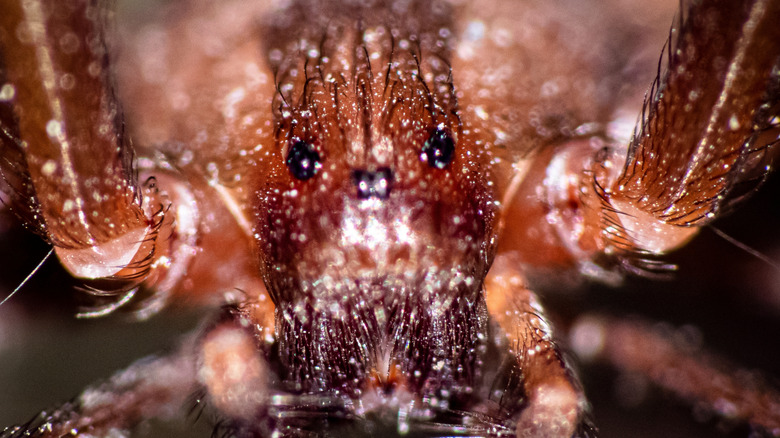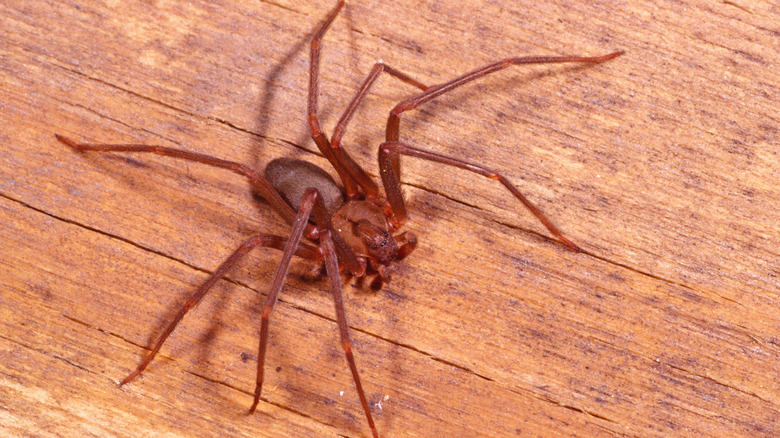The Unsettling Reason You Never Want To Find Brown Recluse Spiders In Your Home
Spiders speak to some deep-seated primal fear in many of us, and for understandable reasons. Of the 3,500 species of spiders in the United States, there are two that do have venom that is harmful to humans: the black widow and brown recluse spider. Nobody wants to find either of these spiders in their home, and in the case of the brown recluse, its bites are venomous enough to cause some pretty nasty wounds that can take a while to heal.
Granted, only a minute percentage of all spiders are actually dangerous to humans. A 2017 study published in Toxicon found that just 0.5% of spider species were classified as potentially dangerous to humans, and even then, the researchers speculated that the actual number might be much lower than that.
The brown recluse spiders is just the exception to the rule, and it can be identified by a violin-shaped patch on its cephalothorax (the head and thorax section) and its overall yellow-brown color. Its legs will typically be darker than its body, and while females can reach up to a quarter of an inch in length (1 inch including the legs), males are usually smaller. You can typically find the brown recluse underneath objects such as rocks, logs, or dead tree bark, but they're also more than happy to reside inside homes, where they'll set up camp in wall cracks or behind certain items where they're sheltered.
The brown recluse is one of two dangerous spider species in the United States
Of course, you're more likely to find a brown recluse in your home if you happen to live in a state where they're well established, but even then, they're not a common house spider. The species has established habitats in 16 states: Alabama, Arkansas, Georgia, Illinois, Indiana, Iowa, Kansas, Kentucky, Louisiana, Mississippi, Missouri, Nebraska, Ohio, Oklahoma, Tennessee, and Texas.
If you do see a brown recluse in your home, you certainly don't want to get too close, as it is certainly one of many poisonous spiders in the Northeast. In some cases, a bite from this spider causes necrosis of the skin, which means the tissue around the bite actually dies off, which in turn can lead to infection. In even rarer cases, the skin around the bite can even turn black and flake off, leaving a wound that takes months to fully heal. A very small number of people may even experience severe issues such as hemolytic anemia (where your red blood cells as killed off faster than they can be replaced) or acute kidney injury.
That said, only around 10% of brown recluse bites actually result in these kind of symptoms. For the most part, people will either experience no reaction or develop a small red papule that requires no treatment. While brown recluse bites aren't always as bad as you might have heard, they can still have serious consequences, especially for more vulnerable people such as children and the elderly. But the bite isn't the only reason you don't want to see one of these arachnids in your home.

